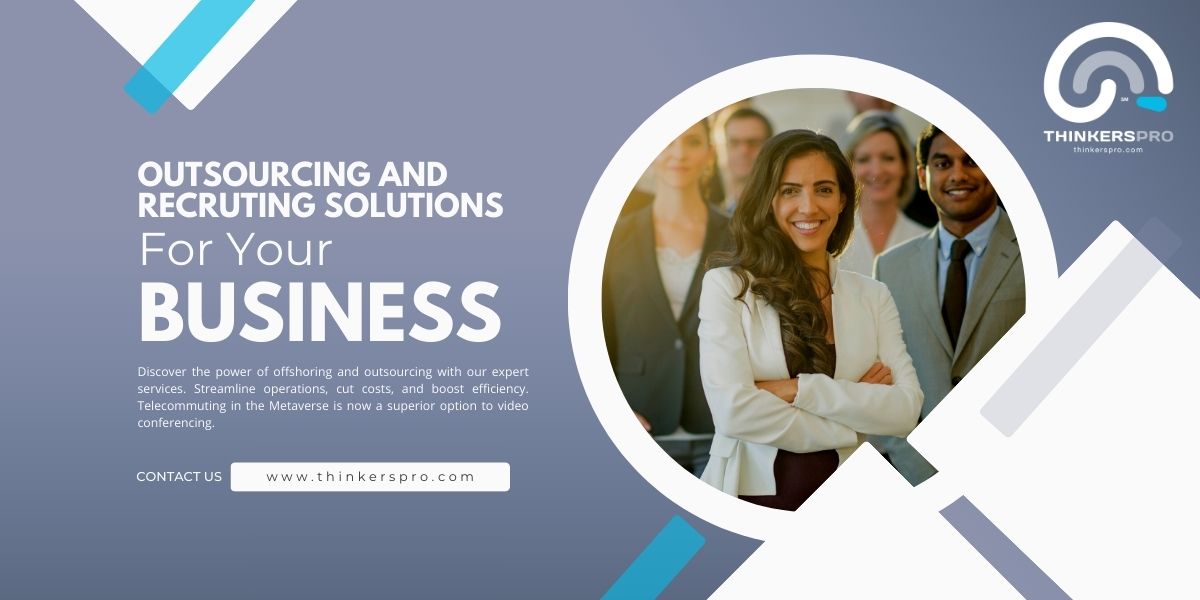The Significance of HIPAA
At the helm of healthcare regulations is the Health Insurance Portability and Accountability Act (HIPAA). Enacted in 1996, HIPAA strives to protect patient privacy and information security while ensuring health insurance coverage is accessible when individuals change or lose their jobs. Healthcare entities must familiarize themselves with the nuances of HIPAA’s Privacy and Security Rules. Compliance is not optional; failure to adhere can result in substantial fines and damage to an organization’s reputation.
Staying Current with Ongoing Changes
Healthcare regulations are far from static; they evolve continually in response to changes in technology, emerging health threats, and shifts in public policy. The Affordable Care Act (ACA), for example, brought sweeping changes to how healthcare is delivered and funded, imposing new requirements on providers and insurers alike. Professionals must ensure they are aware of changes as they occur, incorporating updates into their compliance programs to maintain their status in good standing.
- The Federal Register: A vital resource for monitoring updates to healthcare regulations.
- Professional Associations: Organizations often provide members with updates on industry-specific compliance changes.
- Compliance Trainings: Regular trainings can keep staff informed and adept at navigating the evolving healthcare regulatory environment.
Building a Culture of Compliance
Beyond understanding regulations, fostering a culture of compliance within a healthcare organization is crucial. This culture is underpinned by an ongoing commitment to ethical practices and includes creating systems that promote adherence to compliance standards. Embedding compliance into the core values of an organization not only minimizes legal risks but also enhances patient trust and the overall quality of care.
- Conducting Regular Audits: Assessments help identify potential compliance gaps and areas for improvement.
- Clear Reporting Mechanisms: These allow employees to report concerns without fear of retaliation.
- Leadership Engagement: When leaders demonstrate a strong commitment to compliance, it sets a positive tone at the top.
Strategies for Conducting Healthcare Compliance Risk Assessments
In the intricate landscape of healthcare, compliance risk assessments are pivotal in ensuring that organizations adhere to legal, ethical, and professional standards. As a crucial aspect of effective management, these assessments identify potential risks in operations, specifically regarding violations of laws and regulations. The primary objective of understanding healthcare compliance is to mitigate risk and avoid the severe consequences that come with non-compliance, including hefty fines, legal battles, and a tarnished reputation. A deep grasp of what constitutes a risk assessment is the first step in fortifying your organization against possible compliance pitfalls.
Key Components of Risk Assessments
To begin with, a compliance risk assessment is composed of several core elements. The scope of the assessment must be well-defined, focusing on specific areas such as billing practices, data privacy, or quality of care. Essential to this process is the identification of potential risks, their likelihood, and potential impact. This enables organizations to prioritize issues and allocate resources effectively. Transparent documentation is also crucial; it serves as a roadmap for both current and future assessments.
Developing a Comprehensive Risk Assessment Plan
Embarking on the development of a risk assessment plan demands a methodical approach, starting with a clear framework and involving cross-departmental collaboration. Engage a diverse team of stakeholders, including legal experts, healthcare providers, administrative staff, and IT professionals, to gain a well-rounded perspective of all potential risks. This teamwork ensures a 360-degree view of operations and promotes a culture of compliance at every organizational level.
Continuous Monitoring and Reporting
Integral to a comprehensive assessment plan is the establishment of ongoing monitoring systems. Keeping a constant watch on compliance performance through regular audits and reviews can reveal inconsistencies and areas for improvement. It is equally important to establish a transparent reporting structure, allowing for prompt detection and resolution of compliance issues. These proactive measures not only minimize risk but also serve as evidence of due diligence in the face of regulatory scrutiny.
Employing Technology in Compliance Risk Management
Advancements in technology offer robust tools for streamlining compliance risk management. Implementing specialized software can significantly aid in automating risk assessments, tracking regulatory changes, and managing documentation. This use of technology not only reduces the margin for human error but also provides real-time data for informed decision-making. With such resources at your disposal, organizations can stay ahead of potential risks and maintain compliance with ever-evolving healthcare laws.
Choosing the Right Tools
Selecting the appropriate technology is essential, and this choice should be based on the specific needs of your organization. Look for solutions that offer customizable features, seamless integration with existing systems, and user-friendly interfaces. Emphasize tools that enable efficient risk assessment processes, such as automated risk scoring and real-time dashboards. By implementing technologies that align with your healthcare organization’s unique requirements, you maximize the effectiveness of your compliance risk management strategy.
Training and Education: The Cornerstones of Compliance
Lastly, the success of any compliance program is heavily reliant on thorough training and education. Regular and comprehensive training ensures that all staff members are up-to-date with current regulations and understand their roles in upholding compliance standards. Utilizing a mix of seminars, workshops, and e-learning modules can cater to different learning styles and schedules, fostering a knowledgeable and compliance-conscious workforce.
Developing a Culture of Compliance
More than just individual training sessions, nurturing a culture of compliance is about creating an environment where ethical practices are ingrained into the very fabric of the healthcare organization. Leadership plays a critical role in this regard, setting the tone for acceptable behavior and demonstrating a firm commitment to compliance through their actions. This cultural shift not only reduces risk but also enhances the overall quality of care provided to patients. Boldly embracing a culture of compliance secures an organization’s integrity and reputation in the complex healthcare landscape.
Developing Effective Training Programs to Ensure Regulatory Compliance
Understanding Regulatory Compliance
Regulatory compliance involves adhering to laws, guidelines, and specifications relevant to business processes. A critical aspect of ensuring compliance is developing effective training programs that equip employees with knowledge and understanding of pertinent regulations. These programs must convey complex legal content in an accessible manner, enabling staff to apply regulations accurately in their daily operations.
Key Components of Compliance Training
Identifying Core Objectives: The first step in creating effective training is to clarify what employees need to know. This includes understanding the implications of non-compliance and the role each team member plays in maintaining standards.
Engaging Training Materials: Using various forms of media, such as videos, quizzes, and interactive modules, can make learning about regulation more engaging and memorable for employees.
Continuous Evaluation: To guarantee the training program’s effectiveness, continuous assessment through tests and real-world scenarios is essential. This approach helps to reinforce knowledge and ensures that employees can apply what they’ve learned.
Best Practices for Training Program Development
Creating a successful training program for regulatory compliance begins with understanding the audience – the employees. Tailoring the content to their level of knowledge and job function is vital for the material to be relevant and actionable. Moreover, the training should be adaptable for all learning styles and include hands-on exercises that allow for practical application of regulatory principles.
Interactive and User-centric Design
- Incorporate Role-specific Scenarios: Customizing scenarios that emulate real work situations enables employees to see the direct application of rules in their job roles.
- Flexible Learning Paths: Offering self-paced learning options alongside instructor-led sessions helps cater to different learning preferences.
Reinforcement and Support
- Regular Updates: Keeping the training material current with the latest regulations is crucial for ongoing compliance.
- Accessible Resources: Providing easy access to support materials and job aids, such as checklists and reference guides, reinforces learning outcomes.
Tracking and Measuring Training Effectiveness
Measuring the effectiveness of a training program is fundamental to ensure it meets its objectives. This involves tracking participation, evaluating understanding through assessments, and analyzing the application of knowledge in the workplace. Further, feedback mechanisms should be put in place to allow for program improvements and to keep the training aligned with the evolving regulatory environment.
Key Metrics for Program Success
- Learner Engagement: Track how actively employees participate in training activities.
- Knowledge Retention: Use periodic assessments to gauge the retention of regulatory concepts over time.
- Behavioral Changes: Observe and record changes in employee behavior to confirm the correct application of compliance knowledge.
By focusing on user engagement, providing adaptable content, and continually evaluating the program’s impact, organizations can develop training initiatives that not only meet regulatory demands but also enhance overall compliance culture.
Integrating Compliance Technology into Your Healthcare HR Practices
Understanding the Importance of Compliance in Healthcare HR
Compliance in the healthcare industry is a critical factor that ensures both legal adherence and the highest standards of patient care. Integrating compliance technology within Human Resources (HR) practices in healthcare is not just about meeting legal requirements; it’s about fostering a workplace environment dedicated to responsibility, safety, and efficiency. Healthcare HR departments deal with a broad spectrum of compliance issues, from employee onboarding, licensing verification, continuous training, to privacy laws like HIPAA. Failure to comply can lead to severe penalties and, more importantly, risks to patient welfare.
Benefits of Leveraging Compliance Technology
Adopting technology solutions for compliance management in healthcare HR can deliver significant benefits. First, it can greatly reduce the administrative burden on HR staff, allowing them to focus more on strategic initiatives and less on paperwork. Secondly, it ensures consistency and accuracy in maintaining employee records, scheduling training, and monitoring license expirations. Moreover, an automated compliance system can provide real-time updates and alerts, thus minimizing the risk of oversight and enhancing overall compliance across the organization.
Automating Employee Credential Verification
Automated credentialing systems are a key component of compliance technology. These systems streamline the verification process of employee qualifications, licenses, and certificates. With an automated solution, HR departments can easily track expiration dates and ensure timely renewals, alleviating the risk of having unqualified staff on duty. This not only maintains regulatory compliance but also upholds the institution’s reputation for quality patient care.
Training and Development Compliance
Another crucial aspect covered by compliance technology is the facilitation of ongoing training and development. Healthcare is a rapidly evolving field, and continuous education is mandatory for healthcare professionals. Compliance technology can help schedule, deliver, and track completion of relevant training programs, ensuring that all staff are up-to-date with current practices and regulatory changes. This proactive approach to training can also aid in identifying knowledge gaps and addressing them promptly.
Implementing Compliance Technology Effectively
The effective implementation of compliance technology in healthcare HR necessitates strategic planning and stakeholder engagement. Key steps include: assessing the specific needs of your healthcare organization, selecting a suitable compliance technology solution, and seamlessly integrating it into the current HR systems. It is also essential to provide thorough training for HR staff and healthcare professionals on how to use the new systems effectively.
Choosing the Right Compliance Technology Solution
When selecting a compliance technology solution, it’s vital to consider factors such as the size of the organization, the complexity of its requirements, and the specific regulations it needs to adhere to. A robust platform should offer a user-friendly interface, customizable features, and high-quality customer support to assist with any challenges during and after the integration process.
Training and Support for Staff
Finally, for technology to be truly effective, staff training is imperative. Healthcare HR professionals should receive in-depth training to utilize the technology to its fullest potential, ensuring efficient and consistent compliance management. Additionally, ongoing support should be made available to address questions and assist with technical issues, ensuring that compliance processes continue to run smoothly over time.
In summary, integrating compliance technology into healthcare HR practices is an invaluable step toward enhancing operational efficiency, reducing risk, and maintaining a steadfast commitment to quality patient care. By understanding the significance, enjoying the benefits, and implementing the technology thoughtfully, healthcare organizations can establish robust compliance frameworks that support their overarching mission and goals.
Monitoring and Auditing: Key Pillars in Maintaining Compliance
In the landscape of corporate governance, monitoring and auditing stand as crucial activities that ensure an organization adheres to legal and ethical standards. These twin pillars support a stable structure for compliance, safeguarding the integrity of the company’s operations. It’s through diligent monitoring that businesses can continuously oversee their processes, identifying and mitigating risks before they escalate. Auditing, on the other hand, provides a retrospective, systematic examination that verifies whether the company’s records and operations reflect compliance with said standards.
Effective Monitoring Practices
Maintaining effective monitoring practices involves a proactive approach to compliance. Businesses must foster a culture of transparency where staff at all levels participates in the surveillance of operations. This ongoing process includes:
- Regularly reviewing and updating internal policies.
- Keeping abreast with changing regulations and industry standards.
- Utilizing technology to track real-time data concerning compliance-related activities.
- Training employees to recognize non-compliance incidents.
Through these strategies, organizations can spot potential compliance issues promptly, allowing for quick remediation and thus preserving the company’s reputation and financial stability.
Auditing for Compliance Assurance
Auditing offers an unbiased examination of an organization’s records and practices, often conducted by external experts. Its primary aims are to:
- Assess the effectiveness of internal controls.
- Verify the accuracy of financial reports and regulatory submissions.
- Detect instances of non-compliance or fraud.
- Provide an independent assessment of the company’s compliance with legal obligations.
The outcomes of such audits are vital in making informed decisions and demonstrating diligence to regulatory bodies, shareholders, and other stakeholders. Regular auditing creates a layer of accountability and helps embed a culture of compliance within the organizational framework.
In summary, robust monitoring and auditing methodologies are the backbone of sustaining compliance in businesses. They serve not only to detect and correct deviations from regulatory demands but also to enforce a systematic approach to compliance. Both functions are dynamic and should evolve with the company’s growth and the varying landscape of regulatory requirements. With these mechanisms in place, organizations are better positioned to conduct their affairs within the prescribed legal and moral boundaries.













0 comentarios